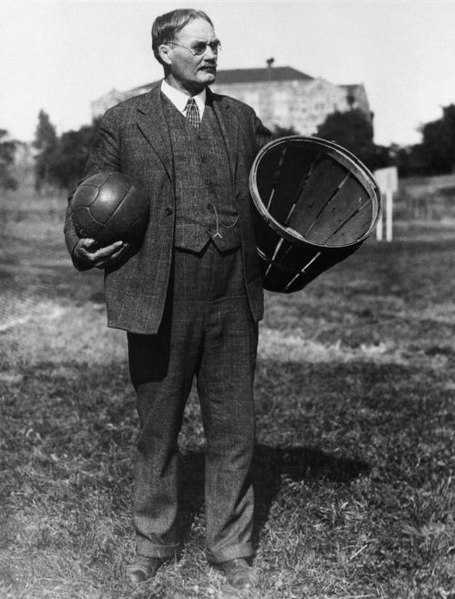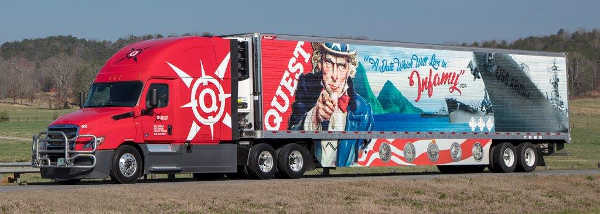- ANTONE PIERUCCI
This Week in History: James Naismith’s new game

The only ones who hate rainy, cold weather more than children who have to stay indoors, cooped up, are their parents who have to endure that caged energy.
It’s even worse for teachers, who don’t even have the benefit of parental love and affection to mitigate their frustration at the frenzied little monsters, who unaccountably possess their classrooms on dark winter days.
Adversity, they say, is the mother of invention.
That certainly was the case during a cold December in 1891 Massachusetts, when James Naismith, a physical educator at the YMCA’s School for Christian Workers in Springfield, faced down a room of energetic youth.
It was snowing outside – hard. There was no way he was going to able to get his students to release their energy in the usual manner – you know, running long distances and other devices of torture that remain the object of pain in P.E. classes to this day.
The director of the physical education department tasked Naismith with the job of coming up with a game that the young boys could play indoors. Something that included plenty of running, of course, and good competition. Naismith had two weeks before presenting a polished final product.
Naismith himself had come from McGill University only recently, having left the Canadian college as the athletics director. The YMCA offered him a wider reach, since the youth organization had a national and, increasingly, international, reach. Hoping to impress his new employer, Naismith went right to work on his new task.
He tinkered with a few different ideas for several days before he remembered a game from his childhood. “Duck on a Rock,” was a game that included one of the most cherished activities of any young boy: throwing rocks.
In this game, the object was to knock a large rock from off the other team’s boulder before they did the same to yours. With a stone in hand, the boys would run around, passing the rock from one teammate to the other, before getting close enough to the opponents’ side to throw it and – ping! – knock off the opponents’ big rock. Simple, destructive and competitive – perfect.
Of course, Naismith couldn’t have his boys throwing rocks around inside the gymnasium, so he made some adjustments.
Naismith had the school custodian nail two peach baskets to the railing of a 10-foot-high balcony that ran around the school gymnasium. Since his class had 18 students, he divided them up into two teams of nine and explained to the players that they would score points by throwing the soccer ball into the opposing team’s basket.
“The first words were not very encouraging,” remembered Naismith years later, “when one of the class made the remark, ‘Humph, a new game.’ I asked the boys to tri it once as a favor to me. They started, and after the ball was first thrown up there was no need for further coaxing.”
The game was an instant favorite. Now it needed a name. One of the students suggested “Naismithball” as an option but, thankfully, that was voted down in favor of “basketball.”
Over the next decade or so, some things were refined in the new sport. For instance, in the first edition, the baskets didn’t have holes in them, so each time a team scored a point, they’d have to climb up and retrieve their ball.
Naismith wrote a rulebook on his new sport and the YMCA began marketing the game across the country to all of its branch locations. Shortly thereafter, they presented the game internationally in 1904 when they presented the game as a demonstration sport during the Summer Olympics in St. Louis.
By then James Naismith had moved on from the YMCA. More interested in physical education, Naismith went back to school and in 1898 earned a medical degree.
He wasn’t just going to let his invention go at that, however. After school, he went to the University of Kansas where he founded a basketball program. Over the next four decades, Naismith would initiate a long line of prestigious basketball coaches and players, including Phog Allen, who would eventually famously coach rock star players-turned coaches Dean Smith, Adolph Rupp and Ralph Miller.
Naismith would live long enough to see his sport officially join the Olympics and to see the birth of the NCAA tournament in 1939.
He died that year, at the age of 78, having forever made his mark in the field of sports and – more importantly – giving parents and teachers everywhere an outlet for their caged-in kids on stormy winter days.
Antone Pierucci is curator of history at the Riverside County Park and Open Space District and a freelance writer whose work has been featured in such magazines as Archaeology and Wild West as well as regional California newspapers.

 How to resolve AdBlock issue?
How to resolve AdBlock issue? 






 Scotch pines on a Christmas tree farm in northern Michigan.
Scotch pines on a Christmas tree farm in northern Michigan. 






